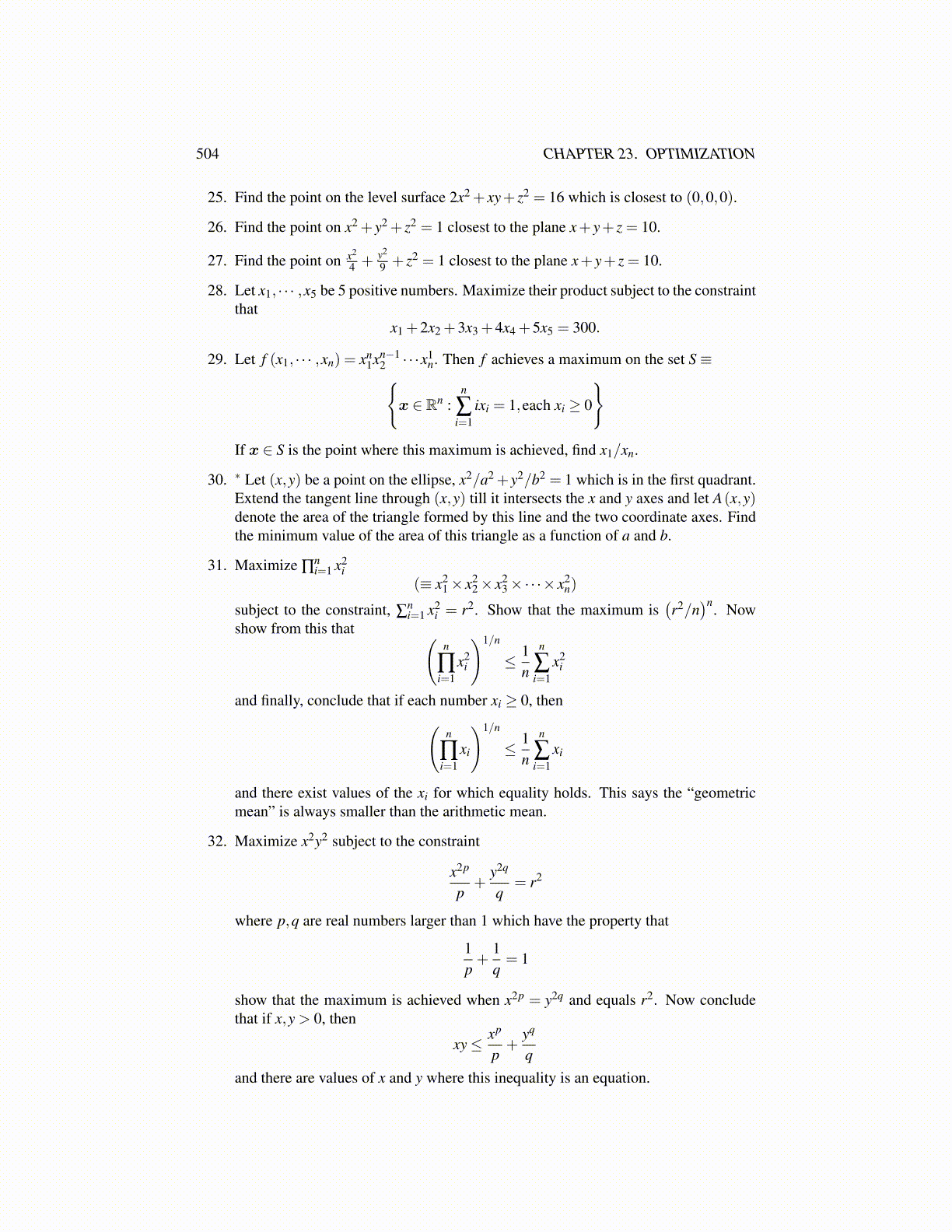
504 CHAPTER 23. OPTIMIZATION
(In this formula, the symbol ∑0k=1 ak will denote the number 0.)
Definition 23.7.2 The matrix(
∂ 2 f∂xi∂x j
(x))
is called the Hessian matrix, denoted
by H (x).
Now recall the Taylor formula with the Lagrange form of the remainder.
Theorem 23.7.3 Let h : (−δ ,1+δ )→R have m+1 derivatives. Then there existst ∈ (0,1) such that
h(1) = h(0)+m
∑k=1
h(k) (0)k!
+h(m+1) (t)(m+1)!
.
Now let f : U → R where U is an open subset of Rp. Suppose f ∈C2 (U). Let x ∈Uand let r > 0 be such that
B(x,r)⊆U.
Then for ||v||< r considerf (x+tv)− f (x)≡ h(t)
for t ∈ [0,1]. Then from Taylor’s theorem for the case where m = 2 and the chain rule,
h′ (t) = ∑i
∂ f∂xi
(x+ tv)vi,h′′ (t) = ∑j∑
i
∂ 2 f∂x j∂xi
(x+ tv)viv j.
Thush′′ (t) = vT H (x+ tv)v.
From Theorem 23.7.3 there exists t ∈ (0,1) such that
f (x+v) = f (x)+∂ f∂xi
(x)vi +12vT H (x+ tv)v
By the continuity of the second partial derivative
f (x+v) = f (x)+∇ f (x) ·v+12vT H (x)v+
12(vT (H (x+tv)−H (x))v
)(23.4)
where the last term satisfies
lim|v|→0
12
(vT (H (x+tv)−H (x))v
)|v|2
= 0 (23.5)
because of the continuity of the entries of H (x).
Theorem 23.7.4 Suppose x is a critical point for f . That is, suppose ∂ f∂xi
(x) = 0for each i. Then if H (x) has all positive eigenvalues, x is a local minimum. If H (x) has allnegative eigenvalues, then x is a local maximum. If H (x) has a positive eigenvalue, thenthere exists a direction in which f has a local minimum at x, while if H (x) has a negativeeigenvalue, there exists a direction in which f has a local maximum at x.